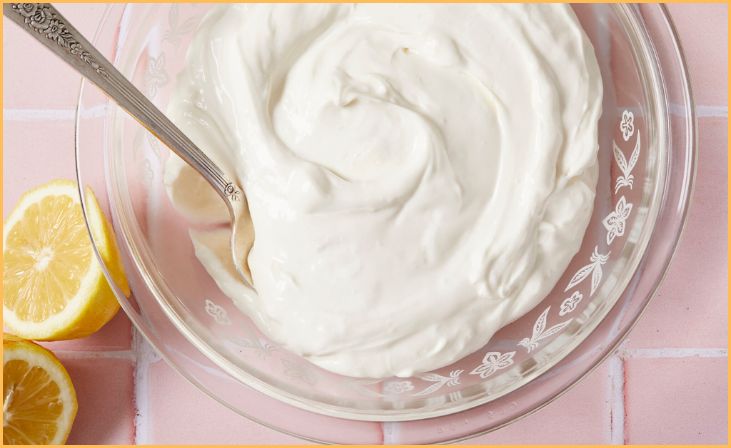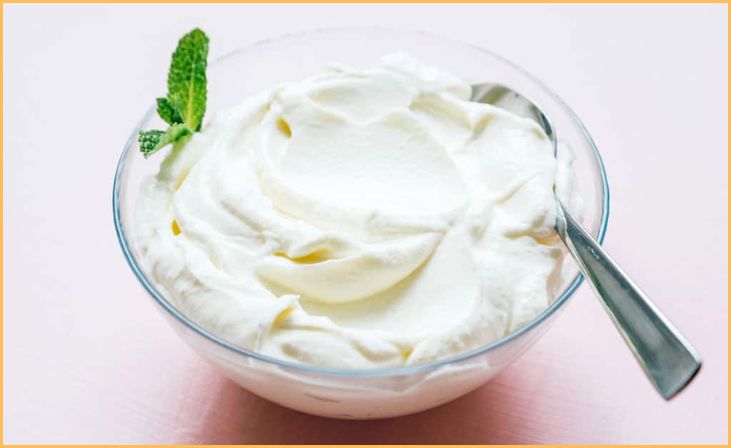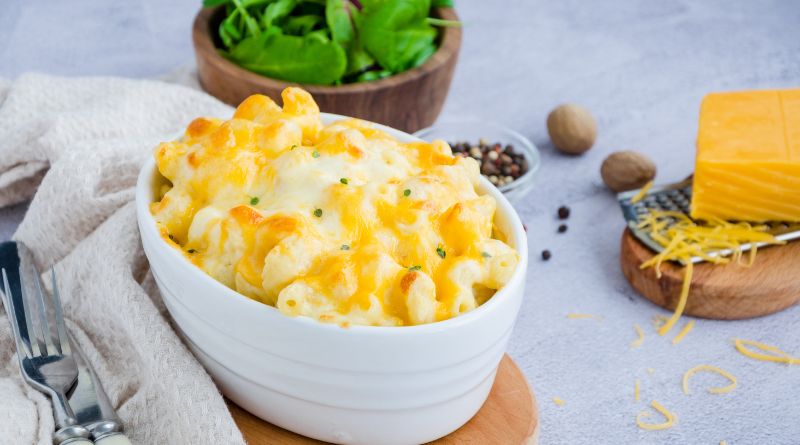Welcome to the world of mac and cheese reinvented! In our exploration of the “Best Substitute for Butter in Mac and Cheese,” we dive into flavorful alternatives that promise to redefine the classic dish. Whether you’re seeking a healthier option or catering to dietary preferences, the journey through this blog will introduce you to an array of substitutes that bring their own unique richness and savory notes.
From olive oil to creamy avocado, each substitute not only enhances the texture but also elevates the overall taste profile of your mac and cheese. Get ready to embark on a culinary adventure as we unveil delicious alternatives that make mac and cheese not only a comfort food staple but also a customizable delight for various palates and preferences.
Substitute For Butter In Mac and Cheese
Discover delectable alternatives to butter in your mac and cheese, ranging from olive oil to creamy avocado. These substitutes bring unique flavors and textures, allowing you to tailor your dish to personal preferences or dietary needs without compromising on richness or taste.
Ghee

Ghee, a form of clarified butter, holds a significant culinary presence with its rich and nutty flavor profile. Produced by simmering regular butter and then removing the milk solids, ghee is left with a golden, clarified liquid that boasts a higher smoke point compared to traditional butter. This higher smoke point makes ghee ideal for sautéing, frying, and roasting without the risk of burning.
Beyond its practical cooking applications, ghee is revered for its deep, aromatic taste that adds a distinctive richness to various dishes. Widely used in Indian cuisine, it is a staple ingredient in both savory and sweet preparations. Additionally, ghee is embraced for potential health benefits, including being lactose-free and containing healthy fats. With its versatile and flavorful qualities, ghee has transcended cultural boundaries to become a beloved ingredient in kitchens worldwide.
Also Read- The Best Substitutes For Milk In Mac And Cheese
Olive Oil
Olive oil, a cornerstone of Mediterranean cuisine, is a golden elixir extracted from pressed olives, offering a spectrum of flavors and health benefits. This versatile oil comes in various types, including extra virgin, virgin, and regular olive oil, each with its unique characteristics. Extra virgin olive oil, derived from the first pressing of olives, is celebrated for its robust flavor and rich aroma, making it ideal for drizzling over salads or finishing dishes. Virgin olive oil, slightly more refined, retains a distinct olive taste, while regular olive oil provides a milder profile suitable for cooking.
Beyond its culinary versatility, olive oil is cherished for its monounsaturated fats, antioxidants, and anti-inflammatory properties, contributing to its reputation as a heart-healthy choice. Whether used as a dressing, cooking medium, or a flavor enhancer, olive oil is a beloved and essential ingredient that elevates the taste and nutritional value of a wide array of dishes.
Heavy Or Thick Cream
Heavy or thick cream, often referred to simply as “heavy cream,” is a dairy product renowned for its rich and velvety consistency. It is the high-fat layer that rises to the top of fresh milk before homogenization, typically containing at least 36% milkfat. This elevated fat content gives heavy cream its luxurious texture and makes it a key ingredient in both sweet and savory dishes.
In culinary applications, heavy cream serves as a foundation for decadent desserts, such as whipped cream, ice cream, and custards. Additionally, it adds a luscious touch to savory recipes like creamy soups, pasta sauces, and rich gravies. With its ability to impart a creamy mouthfeel and enhance flavors, heavy cream is a versatile ingredient that elevates the indulgence of numerous culinary creations.
Margarine
Margarine is a butter substitute made from plant-based oils, typically a blend of vegetable oils like soybean, palm, or sunflower oil. Created through a process called hydrogenation, where liquid oils are solidified, margarine provides a buttery flavor and a spreadable consistency. Often used as a versatile alternative to butter in baking, cooking, and as a spread, margarine contains less saturated fat than butter and may include added vitamins. Its versatility makes it a popular choice for those seeking a dairy-free or lower-cholesterol option.
With various formulations available, including options with reduced trans fats or plant-based margarines, consumers can find a margarine that aligns with their dietary preferences. While some may choose margarine for health reasons or dietary restrictions, it is essential to consider the ingredient list to select a product that meets individual nutritional goals.
Plant-based butter
Plant-based butter is a dairy-free alternative crafted from plant oils, such as coconut, avocado, or olive oil, to replicate the texture and flavor of traditional butter. Often blended with other plant-based ingredients like nuts or seeds, this alternative caters to a variety of dietary preferences, including vegan and lactose-free diets.
Plant-based butter can be used in a similar manner to traditional butter in cooking, baking, and spreading. It provides a creamy consistency and a rich taste, making it suitable for a wide range of culinary applications. As the demand for plant-based options continues to grow, plant-based butter has become a popular choice for those seeking a more sustainable and cruelty-free alternative without compromising on the indulgence and versatility that butter brings to various dishes.
Cream CheeSour Creamse

It seems there might be a slight confusion in your input, but assuming you’re referring to “Cream Cheese” and “Sour Cream,” let’s clarify. Cream cheese is a smooth and spreadable dairy product celebrated for its creamy texture and subtle tanginess. Widely used in baking, it’s a key ingredient in desserts like cheesecakes and frostings.
On the other hand, sour cream is a tangy and creamy dairy condiment produced through fermenting cream with lactic acid bacteria. Commonly used as a topping for dishes such as baked potatoes or tacos, sour cream adds a rich and acidic component to both sweet and savory recipes. Together, these dairy products contribute versatility and delightful flavors to a wide array of culinary creations.
Sour Cream
Sour cream is a versatile dairy product known for its creamy texture and distinctive tangy flavor. Produced by fermenting regular cream with lactic acid bacteria, this process gives sour cream its characteristic taste. Widely used in culinary applications, sour cream serves as a popular topping for baked potatoes, tacos, and soups, imparting a rich and acidic element to enhance the overall flavor profile.
Its smooth consistency makes it a versatile ingredient in both sweet and savory dishes, and it’s often incorporated into recipes to add depth and creaminess. Whether used as a condiment, a base for dips, or as an ingredient in baking, sour cream’s ability to balance flavors makes it a beloved addition to a variety of culinary creations.
Mayonnaise
Mayonnaise is a thick and creamy condiment that has become a staple in kitchens worldwide. Made by emulsifying egg yolks with oil, vinegar or lemon juice, and seasonings, mayonnaise has a rich and tangy flavor profile. Its versatility extends to various culinary applications, serving as a classic sandwich spread, a base for dressings and sauces, and an essential component in dishes like coleslaw and potato salad.
The emulsification process results in a smooth and stable texture, making mayonnaise a reliable addition to both savory and sweet recipes. While commercial varieties are readily available, homemade mayonnaise allows for customization of flavors. With its ability to enhance and complement a wide range of dishes, mayonnaise is celebrated for its culinary flexibility and its role in creating flavorful and satisfying meals.
Tahini and peanut butter
Tahini and peanut butter are both creamy spreads with distinct flavors, offering unique culinary experiences. Tahini, a paste made from ground sesame seeds, boasts a nutty and earthy taste. Commonly used in Middle Eastern cuisine, tahini contributes richness to dishes like hummus or drizzled over grilled meats. On the other hand, peanut butter, a classic favorite, is made from roasted peanuts and offers a sweet and savory combination.
Widely used in sandwiches, baking, and smoothies, peanut butter provides a creamy texture and a comforting, nutty flavor. While tahini adds a Mediterranean flair, peanut butter brings a nostalgic and versatile appeal to various recipes. Each spread offers a different taste profile, allowing for diverse applications in both savory and sweet culinary creations, catering to a range of flavor preferences.
Ricotta
Ricotta is a soft and creamy Italian cheese known for its delicate texture and mild, slightly sweet flavor. Traditionally made from the whey leftover during the production of other cheeses, ricotta has a curdy consistency and a versatile nature that lends itself well to both sweet and savory dishes. It is a key ingredient in classic Italian dishes like lasagna and cannoli, where its smooth texture complements pasta or serves as a decadent filling.
Ricotta also finds its way into desserts, such as cheesecakes, pancakes, or as a topping for fresh fruits. With its subtle taste and adaptability, ricotta adds a luxurious touch to a variety of culinary creations, making it a beloved component in the world of cheeses.
Plain Yogurt

Plain yogurt is a versatile dairy product celebrated for its smooth texture and tangy taste. Produced through the fermentation of milk by beneficial bacteria, it has a creamy consistency without added sugars or flavorings. Its neutral profile makes it a flexible ingredient suitable for both sweet and savory applications. Often enjoyed on its own or as a base for toppings, plain yogurt is also a popular addition to smoothies, parfaits, and breakfast bowls.
In savory dishes, it serves as a substitute for sour cream or mayonnaise, adding a creamy element to dressings, dips, and sauces. Rich in probiotics, plain yogurt also promotes gut health. Whether part of a wholesome breakfast or a versatile cooking ingredient, plain yogurt stands out for its simplicity and ability to enhance the flavors of a wide range of dishes.
For More- How Long Can Buttercream Sit Out: Proper Storage And Shelf Life!
Does Mac and Cheese Taste Bad Without Butter?
Mac and cheese can still taste delicious without butter, and many recipes offer alternatives that are both flavorful and satisfying. While butter is a traditional ingredient in mac and cheese, its absence doesn’t necessarily mean a loss of taste. You can substitute butter with other ingredients like olive oil, cream cheese, or even Greek yogurt to achieve a creamy and rich texture. These alternatives bring their own unique flavors and textures, contributing to a tasty dish that aligns with dietary preferences or restrictions. Experimenting with different ingredients allows for a customized mac and cheese experience, ensuring that it remains enjoyable and flavorful even without butter.
Bottom Line
In the quest for the best substitute for butter in mac and cheese, we’ve discovered a realm of flavorful alternatives that redefine this classic dish. From the velvety richness of olive oil to the creamy texture of avocado, these substitutes not only cater to various dietary needs but also elevate the taste and texture of mac and cheese. Whether you’re seeking a healthier option or a unique twist on the traditional recipe, these alternatives offer a world of culinary possibilities, ensuring that mac and cheese remains a delicious and customizable comfort food.
FAQs
Absolutely! Olive oil not only provides a healthy alternative but also imparts a distinct flavor to your mac and cheese. Adjust the quantity to your taste for a delightful twist.
For a non-dairy option, consider using coconut oil or vegan butter. These alternatives bring a similar creaminess and richness to your mac and cheese without compromising on flavor.
Yes, Greek yogurt is a fantastic substitute. Its thick and creamy consistency adds a delightful texture, and the tangy flavor complements the cheesy goodness of mac and cheese. Experiment with quantities for your preferred taste.







